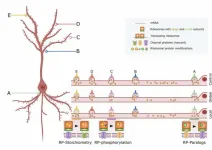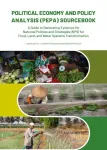(Press-News.org) INDIANAPOLIS – Knowing which populations are following cancer screening guidelines is important to public health officials and policy makers as well as researchers developing strategies to improve adherence. A recent study is one of the first to compare using health information exchange (HIE) data with patient self-reported data as a means of gathering this intelligence.
The researchers found that completeness of information differed by data source and screening test. HIE data provided more information than patient self-reports about laboratory screening tests such as the fecal occult blood test for colorectal cancer screening and the human papillomavirus (HPV) test for cervical cancer screening. Patient self-reports provided more additional information than HIE data about cancer screening procedures such as colonoscopy or mammograms.
The most robust measurement approach involves collecting both HIE and self-reported screening information to draw upon their different strengths according to David Haggstrom, M.D., MAS, of the Regenstrief Institute, Indiana University Melvin and Bren Simon Comprehensive Cancer Center and IU School of Medicine. He is senior and corresponding author of the study.
More complete population data over time detailing cancer screening across populations -- broken down by geographic area, racial or ethnic groups or age range -- can help researchers, public health officials and policy makers gain more nuanced understanding of how many people within each population are receiving recommended screenings, which screenings, and at what intervals. This information can then inform targeted outreach efforts to improve screening of as many eligible individuals as possible.
Unlike electronic health records (EHRs) which typically contain information from a single healthcare setting or system, HIE data comes from numerous sources. A report of an individual’s screening at a facility in a healthcare system different from where primary care is received may not make it into an EHR but could be included in the data available from an HIE.
“We need to help people keep track of whether they are receiving services that may benefit their health and be aware of when those services come due, and to make sure that people who are eligible are being offered them,” said Dr. Haggstrom. “In the case of cancer screening, our clinical goal is to increase the likelihood of detecting a cancer early at a time when it could be treated more successfully than if it were detected later without screening.
“Our study was uniquely possible due to the data infrastructure created by the Regenstrief Institute and managed by the Indiana Health Information Exchange to better support the health of residents of Indiana,” added Dr. Haggstrom. He notes that HIEs in other states are in various stages of development, comprehensiveness and completeness.
This work was aided by a National Cancer Institute supplement to an Indiana University Melvin and Bren Simon Comprehensive Cancer Center grant (P30 CA082709-17S6).
“Comparison of health information exchange data with self-report in measuring cancer screening” is published in BMC Medical Research Methodology.
Authors and affiliations
Oindrila Bhattacharyya 1,2,3, Susan M. Rawl4, Stephanie L. Dickinson5 and David A. Haggstrom6,7,8,9
1 Department of Economics, Indiana University Purdue University, Indianapolis, IN.
2 James Comprehensive Cancer Center, The Ohio State University, Columbus, OH.
3 The William Tierney Center for Health Services Research, Regenstrief Institute Inc, Indianapolis, IN.
4 Indiana University School of Nursing, Indiana University Melvin and Bren Simon Comprehensive Cancer Center, Indianapolis, IN.
5 Department of Epidemiology and Biostatistics, Indiana University School of Public Health-Bloomington, Bloomington, IN.
6 VA HSR&D Center for Health Information and Communication, Roudebush VA, Indianapolis, IN.
7 Division of General Internal Medicine and Geriatrics, Indiana University School of Medicine, Indianapolis, IN.
8 Center for Health Services Research, Regenstrief Institute, Indianapolis, IN.
9 Indiana University Melvin and Bren Simon Comprehensive Cancer Center, Indianapolis, IN.
David A. Haggstrom, M.D., MAS
In addition to his role as director of the Regenstrief Institute William M. Tierney Center for Center for Health Services Research, David A. Haggstrom, M.D., MAS, is a core investigator for the U.S. Department of Veterans Affairs Health Services Research and Development Center for Health Information and Communication at Richard L. Roudebush VA Medical Center. He also is the Sam Regenstrief Investigator in Health Sciences Research, an associate professor of medicine at Indiana University School of Medicine and a researcher with the Indiana University Melvin and Bren Simon Comprehensive Cancer Center.
About IU Melvin and Bren Simon Comprehensive Cancer Center
The Indiana University Melvin and Bren Simon Comprehensive Cancer Center is the state’s only National Cancer Institute-designated Comprehensive Cancer Center and one of only 56 in the nation. The prestigious comprehensive designation recognizes the center’s excellence in basic, clinical, and population research, outstanding educational activities, and effective community outreach program across the state. It is also one of only 33 members of the National Comprehensive Cancer Network. As a member, the center’s physicians have a role in determining the recognized standard of clinical care for cancer patients. The center serves as the central hub for cancer research and education across Indiana University.
About Regenstrief Institute
Founded in 1969 in Indianapolis, the Regenstrief Institute is a local, national and global leader dedicated to a world where better information empowers people to end disease and realize true health. A key research partner to Indiana University, Regenstrief and its research scientists are responsible for a growing number of major healthcare innovations and studies. Examples range from the development of global health information technology standards that enable the use and interoperability of electronic health records to improving patient-physician communications, to creating models of care that inform clinical practice and improve the lives of patients around the globe.
Sam Regenstrief, a nationally successful entrepreneur from Connersville, Indiana, founded the institute with the goal of making healthcare more efficient and accessible for everyone. His vision continues to guide the institute’s research mission.
About IU School of Medicine
IU School of Medicine is the largest medical school in the U.S. and is annually ranked among the top medical schools in the nation by U.S. News & World Report. The school offers high-quality medical education, access to leading medical research and rich campus life in nine Indiana cities, including rural and urban locations consistently recognized for livability.
END
Study compares health information exchange data versus patient self-reports to measure cancer screening uptake
This knowledge can inform targeted population outreach efforts to improve screening
2023-10-10
ELSE PRESS RELEASES FROM THIS DATE:
Seamlessly multiplexing memory storage and recall
2023-10-10
Every day we store memories, some of which we are able to recall later. But while we do so, do we keep on storing? Yes! We cannot afford to stop memory formation while we are retrieving prior ones. Imagine, for instance, that you are navigating the city while recalling last night’s events to a friend tagging along. Your brain must memorize aspects of the route even while you are in the story, so that you can find your way back later or reach your next destination.
We seem to perform this task without much conscious effort. Big deal, one could say, as we know that the brain has trillions of synaptic connections, so parallel processing ...
UNIST recognized for design excellence at IDEA 2023!
2023-10-10
The design concept of a disaster alert balloon, capable of changing its color like a chameleon, has been honored for its design excellence at the internationally renowned International Design Excellence Award (IDEA) 2023.
The awarded concept, named SAFEUP, serves as a hazard indicator, providing visual information about the condition of accident sites from a safe distance. Developed by Professor Chajoong Kim and his team in the Department of Design at UNIST, SAFEUP has received the ‘IDEA 2023’ Bronze Award in the category of Concepts & Speculative Design. The ...
The ribosome–depression link
2023-10-10
A group of ribosomal protein genes connect animal models of depression to human patients with major depressive disorder. In order to research depression treatments, scientists use a mouse model, inducing a state with similarities to depression though exposure to variable, unpredictable, and uncontrolled stressors over days or weeks. But is this state molecularly akin to what humans with major depressive disorder experience? To find out, Xiaolu Zhang, Mahmoud Ali Eladawi, and colleagues examine transcriptomics data from postmortem human brain tissue and from several mouse models of stress, seeking to pinpoint conserved ...
Ionic crystal generates molecular ions upon positron irradiation, finds new study
2023-10-10
Positron, the antiparticle of electron, has the same mass and charge as that of an electron but with the sign flipped for the charge. It is an attractive particle for scientists because the use of positrons has led to important insights and developments in the fields of elementary particle physics, atomic physics, materials science, astrophysics, and medicine. For instance, positrons are known to be components of antimatter. They are also powerful in detecting lattice defects in solids and semiconductors and in structural analysis of the topmost surface of crystals. Positronic compounds, namely ...
Maternal obesity predicts heart disease risk better than pregnancy complications
2023-10-10
First study to determine the role pre-pregnancy obesity plays in future poor heart health
Those with overweight or obese BMI in early pregnancy had a higher risk of developing hypertensive disorders of pregnancy
‘If pre-pregnancy obesity is the culprit or cause of risk, we should be targeting this with interventions’
Pregnancy complications such as preeclampsia and gestational diabetes have recently been associated with a higher risk of developing heart disease later in life. But a new Northwestern Medicine study has found obesity before or during ...
Pregnancy complications increase and unmask short- and long-term cardiovascular risk for people with obesity
2023-10-10
Having obesity before and during early pregnancy appears to be a strong indicator of risk for developing future cardiovascular disease and was significantly linked with adverse outcomes during pregnancy such as high blood pressure, preeclampsia, and gestational diabetes, according to a study published in Circulation Research that was funded by the National Institutes of Health. Researchers have known obesity is a risk factor for cardiovascular disease and pregnancy complications related to blood pressure. However, they did not know which factors – obesity or the pregnancy complications – played larger roles in influencing a person’s ...
Are we running out of water? Water security threatened by droughts and heatwaves worldwide
2023-10-10
Increased demand for water due to global population growth, coupled with the increasing frequency of extreme weather events, endangers our water security. Nonetheless, little is known about the relationship of water use by sectors and the occurrence of drought-heatwave events, particularly at the large scale. To unveil this issue, a group of researchers from the Department of Physical Geography from Utrecht University evaluated the responses of sectoral water use during droughts, heatwaves and compound (combined) events at a global scale. The study published in Environmental Research Letters shows that stronger sectoral water use responses are found for heatwaves compared to ...
Researchers find pre-Columbian agave plants persisting in Arizona landscapes
2023-10-10
A new paper in the Annals of Botany, published by Oxford University Press, reveals that researchers have found unaltered agave plant species cultivated by several early cultures including the Hohokam people, a large Native American group in the Southwest that existed between 300 and 1500 CE.
Agave plants have been of great economic and social importance in the Americas for at least 9,000 years. Before people cultivated corn, agave plants were one of their main carbohydrate sources. Archaeological research indicates the Hohokam increased agricultural potential by building terraces for agave dry farming. Agricultural features such as terraces and rock piles were especially characteristic ...
Food taxes, farm subsidies and GM crops: new ‘how-to’ guide launched for tailor-made food policies
2023-10-10
October 10, WASHINGTON D.C. – A new tool will help governments customise food and agriculture policies based on country-level circumstances to increase their effectiveness at improving diets, adapting to changing climate and protecting natural resources.
The Political Economy and Policy Analysis (PEPA) Sourcebook is the first to compile dozens of frameworks and approaches for designing food and agriculture policies, such as reforming farm subsidies, water policies, food safety regulations and taxes.
The authors from the Alliance of Bioversity International and the International Center for Tropical Agriculture (CIAT), and the International Food Policy Research Institute ...
Comprehensive new Canadian guideline for skeletal health and fracture prevention
2023-10-10
A comprehensive guideline from Osteoporosis Canada aims to help primary care professionals deliver care to optimize skeletal health and prevent fractures in postmenopausal females and males who are age 50 years and older. It is published in CMAJ (Canadian Medical Association Journal) https://www.cmaj.ca/lookup/doi/10.1503/cmaj.221647.
With 25 recommendations and 10 good practice statements, this update to the 2010 guideline contains sections on exercise, nutrition, fracture risk assessment, treatment and more, reflecting advances in risk assessment, and nonpharmacologic and pharmacologic management of osteoporosis.
In ...
LAST 30 PRESS RELEASES:
University of Phoenix College of Doctoral Studies releases white paper on AI-driven skilling to reduce burnout and restore worker autonomy
AIs fail at the game of visual “telephone”
The levers for a sustainable food system
Potential changes in US homelessness by ending federal support for housing first programs
Vulnerability of large language models to prompt injection when providing medical advice
Researchers develop new system for high-energy-density, long-life, multi-electron transfer bromine-based flow batteries
Ending federal support for housing first programs could increase U.S. homelessness by 5% in one year, new JAMA study finds
New research uncovers molecular ‘safety switch’ shielding cancers from immune attack
Bacteria resisting viral infection can still sink carbon to ocean floor
Younger biological age may increase depression risk in older women during COVID-19
Bharat Innovates 2026 National Basecamp Showcases India’s Most Promising Deep-Tech Ventures
Here’s what determines whether your income level rises or falls
SCIE indexation achievement: Celebrate with Space: Science & Technology
Children’s Hospital Colorado performs region’s first pediatric heart and liver dual organ transplant
Australian team discover why quantum computers have memory problems over time
What determines the fate of a T cell?
Candida auris: genetic process revealed which could be treatment target for deadly fungal disease
Groundbreaking discovery turns household plastic recycling into anti-cancer medication
Blocking a key inflammatory pathway improves liver structure and vascular function in cirrhosis, study finds
Continuous spread: Raccoon roundworm detected in nine European countries
HKUST Engineering researchers developed a novel photodetector to enhance the performance of on-chip light monitoring
Strategic river sensors could have forewarned of Texas Camp flood disaster
Drone sampling of whale breath reveals first evidence of potentially deadly virus in Arctic
Roman soldiers defending Hadrian’s Wall infected by parasites, study finds
Pinochet’s prisoners were tormented with music but still found solace in it, a new book reveals
Fertility remains high in rural Tanzania despite access to family planning
AI-assisted device can improve autism care access
Kinetic careers
Uncovering how parasitic plants avoid attacking themselves to improve crop resistance
Nanoparticle vaccine strategy could protect against Ebola and other deadly filoviruses
[Press-News.org] Study compares health information exchange data versus patient self-reports to measure cancer screening uptakeThis knowledge can inform targeted population outreach efforts to improve screening





